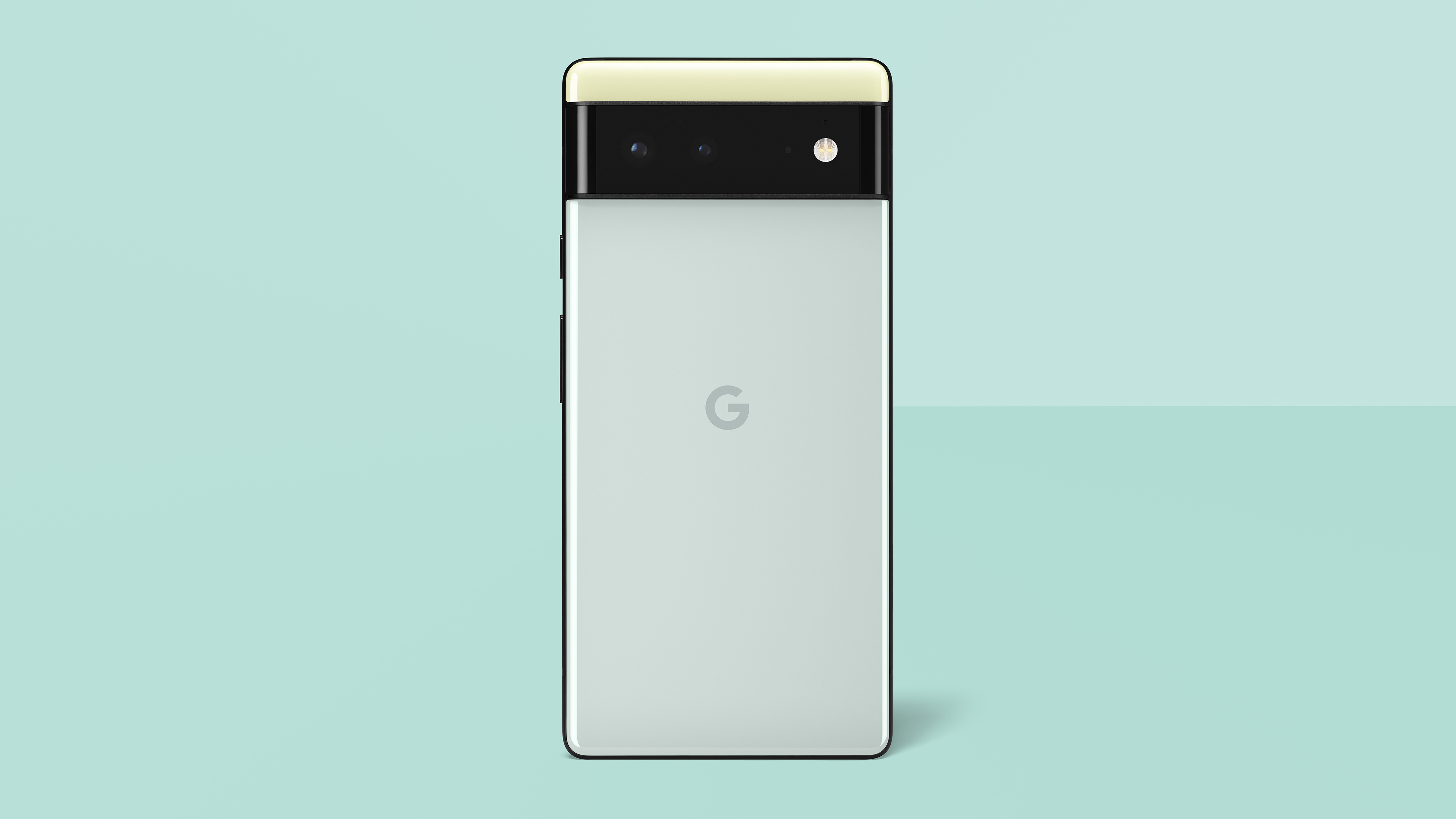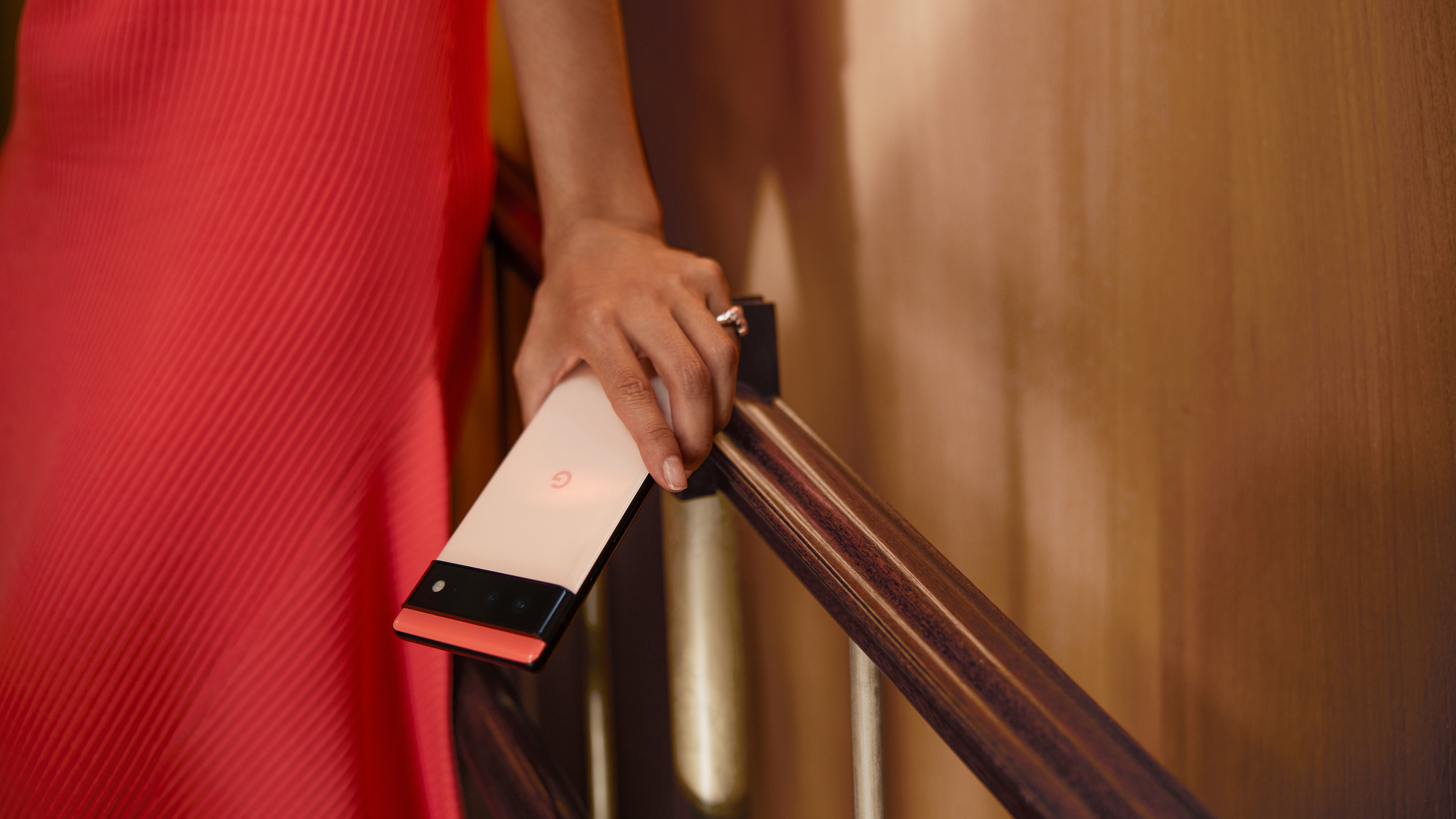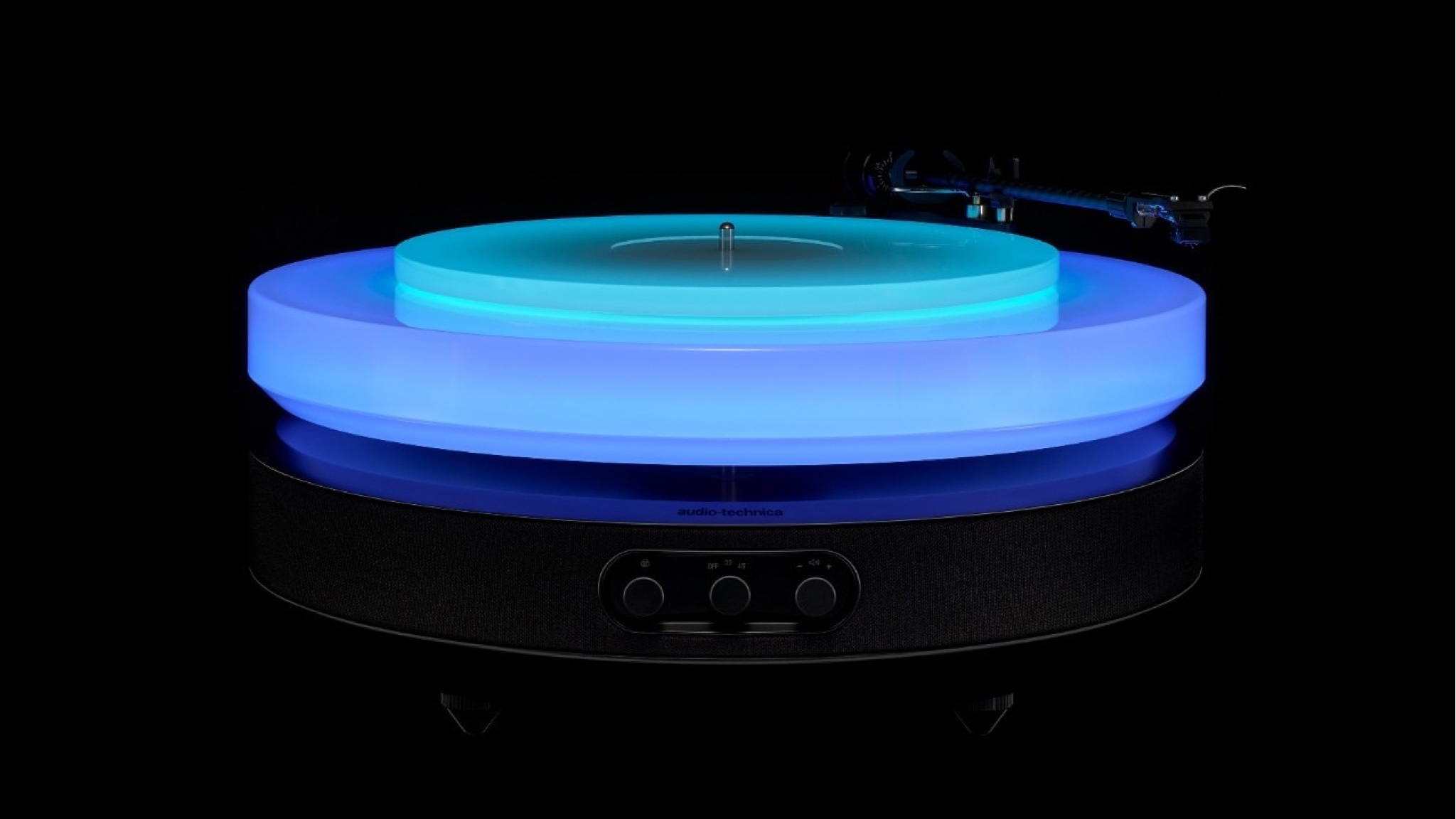Google Pixel 6 review: finally, a premium smartphone from Google
Google is back to making premium smartphones, and the Pixel 6 is well worth your money

The Pixel 6 offers the most premium and polished experience we've seen from the Pixel series so far, keeping the best bits of the Pixel 4 and 5 – namely excellent photo-taking and clean software – then packaging it in more premium design.
-
+
Tensor chip is impressive
-
+
Great camera
-
+
Bold display
-
+
Purest version of Android
-
-
No longer a compact size option
-
-
No telephoto camera
-
-
Camera bump is large and awkward
Why you can trust T3

With the Pixel 6, Google has taken a slightly different approach to its previous range of smartphones – instead of the 'cute' and 'quirky' designs of previous Pixel flagships, the Google Pixel 6 is premium through-and-through, with expensive materials and a polished design.
This could be seen as the first phone from Google that can truly go up against the likes of Samsung, Apple and Huawei at the very top end of the premium smartphone spectrum, where handsets cost a substantial chunk of money and look every bit as expensive and as packed with power as they are.
- We've listed the best phones on the market
- Check out the best Android phones right now
- Google Pixel 6 Pro review
This comes after last year's Pixel 5, which was almost at the other end of the spectrum, offering middle of the road specs at a discounted price, making it difficult to distinguish the Pixel 5 from the Pixel 4a 5G and the Pixel 4a, all of which were very good phones, but none were competition for Samsung's premium flagship.
That has all changed now, though, and in this Google Pixel 6 review, we'll take you through everything you need to know about the phone, from the quality of that famous Pixel camera, to what you can expect from the battery life. That should help you figure out whether or not this is the best phone for you.
Google Pixel 6 review: unboxing video
Here's what you get in the Google Pixel 6 box:
Google Pixel 6 review: price and availability
The Pixel 6 will be released on the 28th of October 2021 and can be yours for £599 in the UK and $699 in the US – you can buy it directly and SIM-free from the Google Store, as well as from third-party retailers. In the UK, it's also available on a variety of pay monthly contract details from the likes of O2, Vodafone, EE and Three.
That's a pretty good price, considering the decidedly less premium Google Pixel 5 was the same price at launch. You're getting a lot more for your money here.
It's also significantly cheaper than the Google Pixel 6 Pro, which starts at $899 in the US, £849 in the UK and AU$1,299 in Australia.

Google Pixel 6 review: design and screen
The Pixel 6 comes sporting a 6.4-inch screen, which is much larger than the displays of previous Pixel phones, which were quite compact in comparison.
The AMOLED, HDR10+ screen runs at a refresh rate of 90Hz and a resolution of 1080 x 2400 pixels – it's fluid, sharp, bright and difficult to find fault with. A single punch hole notch for the selfie camera sits up in the top left-hand corner, while the bezels are nice and thin all the way around the screen.
As for the rest of the design, the aluminium metal body of previous Pixel phones has gone – now we get a much more traditional metal frame with glass-back design. Google does keep things slightly playful with a two-tone colourway, available in either black/grey, pink/coral, or mint/green. I like these colour options as they differentiate the Pixel from other more traditionally coloured smartphones.
Perhaps the most contentious part of the new design is the large camera bump on the back, which sits a good 3mm proud of the case. It's not the most attractive design, and can also make it awkward to slip the phone into a pocket (the camera bump often gets caught on things). It also makes the phone top-heavy and unbalanced.
However, it does stretch the entire width of the phone case, so it doesn't rock when put on a flat surface.
It's certainly not a major issue, but it is an odd design choice.
The phone is officially IP68-rated, which means it's able to survive being submerged in water at a depth of 1.5 metres (nearly 5 feet) for up to 30 minutes, which gives you some extra peace of mind.
There's no headphone jack here, just a USB-C port.
- Our picks for the best gaming phones

Google Pixel 6 review: camera
Ever since the first Pixel, these phones have shone in terms of photo-taking – not in the raw specs, but in the quality of the image processing that Google is able to apply through its software. That continues with the Pixel 6 and this year, it features Google Tensor, a new custom-built chip that helps speed up image processing.
The 50MP+12MP camera setup in operation here is a huge leap forward from the configuration we saw in the Pixel 5, especially in terms of megapixels.
The main camera is a 50MP sensor with an f/1.9 aperture. It features omnidirectional phase detection autofocus, laser autofocus, and optical image stabilisatoin.
The ultrawide camera features a 12MP sensor, f/2.2 aperture, and 114-degree field of view.
Photos are again excellent, with sharpness, colour reproduction, detail and dynamic range all impressing. Cameras on other phones have more lenses and more tricks – and Google's competitors are definitely catching up – but Pixel photography remains the high bar for images that look great and are effortless to take.
As with previous models, the Night Sight mode can do wonders for dark photos (if you can keep your phone still for a second or two) – Google claims that the main image sensor captures 150-percent more light than the Pixel 5, bringing vivid colour and greater accuracy to photos. Unless you're trying to shoot in the pitch darkness though, your low light shots will come out with plenty of detail and colour, especially when it comes to close-up photos – it's very impressive – although our only complaint would be that it makes some shots look unnaturally bright.
Google has also added a few new tricks in the form of 'Motion Mode' which aims to make everyday shots more epic with action shots and long exposures. Previously this type of photography has been difficult to do on smartphones, so it's exciting to see Google experiment here.
Motion mode has two settings; Action Pan, which focuses on the moving subject and adds a creative blur to the background, and Long Exposure, which adds a creative blur to the moving subjects in the scene.
Think gushing waterfalls, car headlight trails, and bikes speeding past.
Unfortunately, these features weren't added to our review unit quite yet – we'll update this review once we've tried them out. You can read our Pixel 6 Pro review to see them in action.
Google's clever software now also features Face Unblur which helps to clearly capture faces even in the toughest conditions, as well as 'Real Tone', and it means portraits taken on the Pixel 6 should reflect all skin tones more accurately.
In terms of front cameras, the Pixel 6 has an 8-megapixel sensor with a ƒ/2.0 aperture and an 84-degree wide field of view.
Google Pixel 6 review: image samples






Google Pixel 6 review: other specs and features
The Pixel 6 supports 5G and runs on Google new Tensor processor, which is paired with an ample 8GB of RAM and either 128GB or 256GB of internal storage (with no memory card expansion slot).
Google claims Tensor gives up to 80-percent faster performance than Pixel 5, so apps load quicker and gaming is more responsive.
The Pixel 6 has achieved an average Geekbench 5 score of 2837 – which is good, but not as good as other flagship phones.

From gaming to photo editing to email, we didn't notice any lag or stutter from the Pixel 6 during our time testing it.
The Pixel 6 display and stereo speakers work well for watching shows and movies, and although the screen isn't huge, it's perfectly fine as a media player. You get all the Google apps preinstalled of course, plus a couple of useful Pixel exclusives – including a Recorder tool that can transcribe spoken text in real-time for you (useful if you need to record an interview, phone call or lecture, for example).
The Pixel 6 offers fast 30W charging and 21W wireless charging – that's fast. You can get up to 50-percent battery in just 30 min.
We haven't run any scientific battery tests, but the 4614 mAh battery comfortably lasted all day, every day throughout our review period.
But, besides the cameras, the clean software has always been one of the best reasons to buy a Pixel phone, and nothing has changed this time around. You're guaranteed to get Android updates before anyone else for the next couple of years, and there isn't anything in the way of bloatware or unnecessary apps.
Android 12 is one of the biggest updates to Android in years, and one of the most prominent changes is how Android looks. Google calls this 'Material UI' and it sees the system adapt the colours to match the colours in your phone background – everything from the icons, to messages, to the calculator app are changed.
There are also a number of new and very useful widgets to play around with like the various clock faces and conversation widgets. All of the new design features make the phone quicker and more straightforward to use.
- Discover the best small phones for you

Google Pixel 6 review: verdict
Google has aimed high with the Pixel 6 and it's a big improvement over the Pixel 5 – you now get a more premium design, faster CPU, improved camera, and plenty of new software features. Perhaps best of all, it's available for the same price as last year's phone.
There's certainly a lot to like about the Pixel 6 and only a few small things to complain about. The main issue is the large camera bump on the back of the phone – it not only looks awkward but it makes for some iffy ergonomics as well. It's also a shame that this device has grown and there's no longer a compact size option from Google.
But they're easy things to look past – the reasons you would buy this Pixel phone continue to be the reasons you would buy any Pixel phone: primarily, speedy Android updates for the next few years, a bloat-free software experience with some nice Google-y tweaks, and a camera that's going to outperform most of the others on the market at the moment.
Google Pixel 6 review: also consider
One of the best phones for most people is still the iPhone 13, with a 6.1-inch screen, or the iPhone 13 Mini which has an even smaller screen at just 5.4-inches. They've not got the same long and thin design but they're still both pretty compact. The battery life is better than previous iPhones, they look great, have fantastic camera systems, pack in 5G, and the screens are beauties.
Not a fan of iOS? Not everyone is, even though sometimes it may seem like they are. If you’re only looking at Android phones then the OnePlus 9 could be a good choice. It's around the same size, with a 6.55-inch screen, housed in a slim and lightweight handset. It’s a very impressive phone all around, and it's around the same price, too.
- All the best cheap phones in one list
Sign up to the T3 newsletter for smarter living straight to your inbox
Get all the latest news, reviews, deals and buying guides on gorgeous tech, home and active products from the T3 experts

As the Style and Travel Editor at T3, Spencer covers everything from clothes to cars and watches to hotels. Everything that's cool, stylish, and interesting, basically. He's been a part of T3 for over seven years, and in that time covered every industry event known to man, from CES and MWC to the Geneva Motorshow and Baselworld. When he's driving up and down the country in search of the greatest driving roads, he can be found messing around on an electric scooter, playing with luxury watches, or testing the latest fragrances.
-
 Eve’s smart plug gets impressive Matter upgrades – but I’m most excited about the app
Eve’s smart plug gets impressive Matter upgrades – but I’m most excited about the appEve Energy adds Matter support and an updated Android app
By Bethan Girdler-Maslen Published
-
 Audio-Technica’s latest luxury turntable will light up your life, and your records
Audio-Technica’s latest luxury turntable will light up your life, and your recordsThis strictly limited turntable is a feast for the eyes as well as the ears
By Carrie Marshall Published
-
 Girard-Perregaux Laureato 38 mm gets a blue diamond upgrade
Girard-Perregaux Laureato 38 mm gets a blue diamond upgradeWe’re totally besotted by these diamond-bezelled beauties from Girard-Perregaux
By Alistair Charlton Published